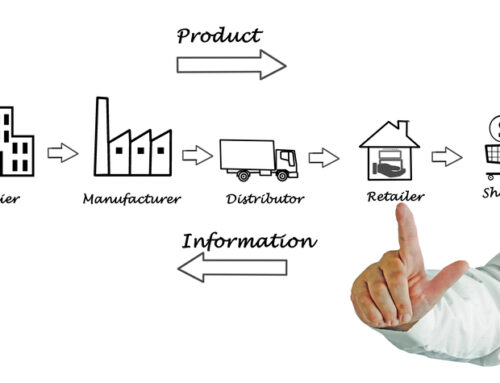In the hustle and bustle of the holiday season, it’s easy to get caught up in the frenzy of shopping without much thought. We’re scrolling our feed, and suddenly the most amazing video about the most amazing gift ever pops up, with a limited time coupon, and CLICK-BOOM we’ve bought something in less than the time to make a cup of eggnog.
It doesn’t sound like a bad thing, does it? And if it’s in the service of giving to people we love, it definitely doesn’t seem harmful, right? But we do know that when the credit card bill arrives, or we read another article about the perils of overconsumption, our holiday madness has repercussions. Ready to try a new habit? By embracing intentional thinking and practices in our holiday shopping, we can make more conscious choices that positively impact both our environment and our well-being.
The next time your finger is poised to click, or you’re standing in front of an enticing display, stop for a second to consider these factors at play:
Is there a good chance I’ll have to return it? Is the cost of “free returns” buried in the price?
Returns have become a common occurrence in the world of online shopping, where $5.7 trillion USD is spent each year globally. Recent statistics show staggering return rates, particularly for clothing and shoes [2]. This constant cycle of purchasing and returning not only adds pressure on the environment (carbon emissions, landfills) but also contributes to the growing issue of textile waste and chemicals in water.
Ways to reduce your impact from returns:
- Consider a local option where you can try items on. This also helps you support employment in your community!
- Read reviews carefully and see what feedback is offered by other people with your body shape and size have experienced.
- If you are unsure of the size and there aren’t enough reviews to make a decision easy, don’t “bracket” (buy multiple sizes with intent to return). Inquire with the brand about how to choose the best option.
- If it doesn’t fit, consider alterations. If you don’t have a local option, consider a trusted mail-in tailor such as TadMore Tailoring (USA) or SOJO (UK).
Emotional Shopping
Emotional shopping is a phenomenon that many of us can relate to. Impulse buying, using shopping as “Retail Therapy,” or even treating it as entertainment can lead to unnecessary purchases and financial strain. Companies like Temu have taken advantage of our psychological tendencies and employed gamification strategies to encourage impulsive buying [3]. By recognizing these emotional triggers and finding healthier alternatives, we can regain control over our spending habits and prioritize our well-being.
Fight the (mind control) power!
- Understand that companies have spent thousands of dollars making your experience “frictionless” so that you buy the maximum possible in the shortest period of time. In the same way that food companies use additives to create addictive properties, e-commerce experts employ many methods to keep you coming back and clicking and buying.
- Don’t go shopping online or IRL just for fun or to kill time, unless you make a list first of the actual items in your closet that need filling. Keep it on your phone so that you direct your shopping to only things that are necessary. When that oh-so-sexy-and-on-sale item shows up in your social feed, refer to your list before clicking!
- Thrifting, borrowing and clothing swaps can provide that feeling of having hunted down something new and interesting.
- Rent or borrow, particularly for special events where you are unlikely to re-use the item often.
- Of course we have to suggest made to measure or custom, where you are part of the process and employing a different emotional “reward” that is not impulse based. It’s less likely to feel disposable if you have spent time being part of the process, and have a connection with its maker.
The Truth about “Free Shipping”
Free shipping has become a common marketing tactic used by online retailers. However, it’s important to understand the hidden costs associated with this enticing offer. Often, customers need to meet minimum purchase requirements to qualify for free shipping, leading to additional spending on items they may not actually need. Or, the price is inflated to cover the cost of at least one shipping and possibly a return shipment risk. Moreover, the environmental impact of long-distance shipping is significant, with carbon emissions contributing to climate change. By supporting local businesses and considering the true cost of shipping, we can make more sustainable choices that benefit both the environment and our communities.
Peeling back the true cost:
- Remove the cost of shipping from the item price to anticipate what it’s really worth – and how much the maker likely got paid to make it. Assuming an average of $7-$20 USD for shipment cost from Asia per item (more if it’s domestic USA), what does that leave you with? Does the “real” price hint at potentially unethical labor practices or low quality?
- Even Amazon is having trouble making the numbers work for them to offer unlimited free shipping. While they have traditionally used their logistics services, merchant commissions, and subscription fees to offset the real costs, the company is slowly changing its policies.
- What’s the net math if you just pay shipping and don’t add more to get the “free” shipping? Could you find this locally and get it faster? Is the cost of gas cheaper than shipping?
Go forth and be mindful
This holiday season, let’s approach our shopping with intentionality and mindfulness. By being aware of the environmental impact of returns, understanding the pitfalls of emotional shopping, and considering the true cost of “free shipping,” we can make more conscious decisions that align with our values. Let’s strive for guilt-free holiday shopping that not only brings joy to our loved ones but also contributes to a healthier planet. Happy holidays!
Sources:
[2] Total Cost of Online Returns Breaks $200 Billion
[3] The Dark Side of Retail Therapy: How Temu is Tapping into your Psyche.



